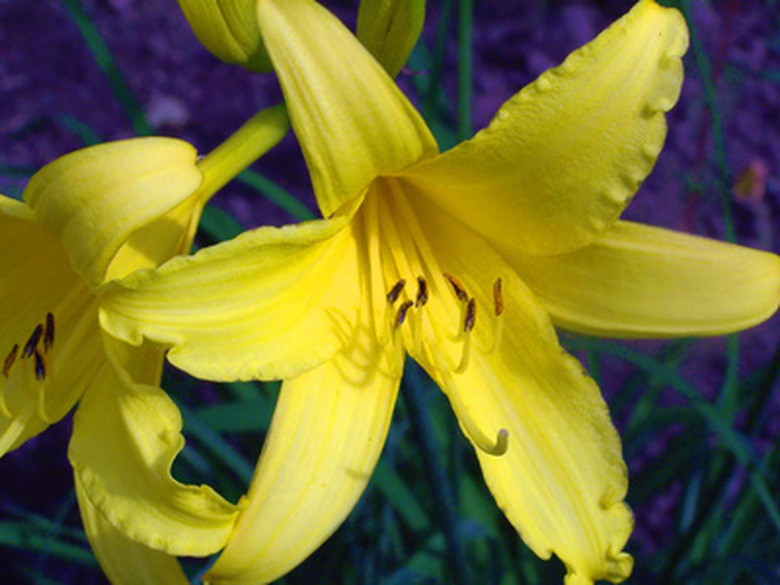Xeriscape Plants For Florida
Xeriscaping is the landscape practice of choosing low-maintenance, drought-tolerant plants. Elements of xeriscaping include grouping plants according to water needs, use of drought-tolerant turf rather than traditional, high-maintenance lawns, and extensive mulching in the landscape. In Florida, xeriscaping is often referred to as "Florida-Friendly Landscaping."
Perennials
Perennials live for more than two years and flower more than once. Generally, perennials are more drought tolerant than annuals and are cost efficient because they do not need to be replanted every year. Soil preparation is the most important step in growing perennials because they remain in the garden bed for long periods. Organic compost improves sandy soils, and the use of mulch helps conserve water. Good perennials for all of Florida include African iris (Dietes species), beach sunflower (Helianthus debilis), blackberry lily (Belamcanda chinensis), daylily (Hemerocallis species), firebush (Hamelia patens), pentas (Pentas lanceolata), salvias (Salvia species), and verbena (Verbena species and hybrids).
- Xeriscaping is the landscape practice of choosing low-maintenance, drought-tolerant plants.
- Elements of xeriscaping include grouping plants according to water needs, use of drought-tolerant turf rather than traditional, high-maintenance lawns, and extensive mulching in the landscape.
Ground Covers
Ground covers grow low to the ground and are used in areas where grass is unwanted or will not grow well. Ideal groundcovers remain green throughout the year and are permanent. Groundcovers are used for erosion control and as natural barriers to reduce foot traffic in desired areas. Many groundcovers do well in shade and are more tolerant than typical turfgrasses. Groundcovers good for landscapes in all areas of Florida include beach sunflower (Helianthus debilis), lantana (Lantana spp.), mimosa (Mimosa strigillosa), perennial peanut (Arachis glabrata) and dwarf Asiatic jasmine (Trachelospermum asiaticum 'Minima'). Note that Lantana camera is a non-native variety and is considered invasive in South and Central Florida, and should be used with caution in North Florida.
- Ground covers grow low to the ground and are used in areas where grass is unwanted or will not grow well.
Annuals
Annuals are plants that complete their life cycle in one growing season. Horticulturally, this term often refers to perennials used as bedding plants and replaced seasonally. In Florida, many annuals are cool-season plants that would struggle to survive in the harshness of summer. Annuals provide a punch of color in the landscape but are a recurring expense. There are species that do well in the heat of a Florida summer, including sunflower (Helianthus annuus), rose moss (Portulaca grandiflora), globe amaranth (Gomphrena globosa) and zinnia (Zinnia elegans).
References
- "Landscape Plants for Subtropical Climates"; Bijan Dehgan; 1998
